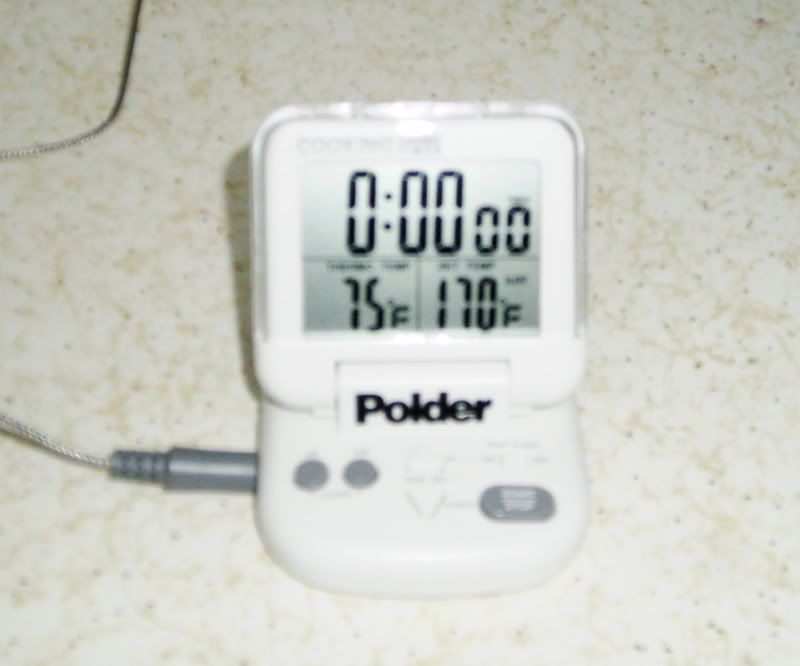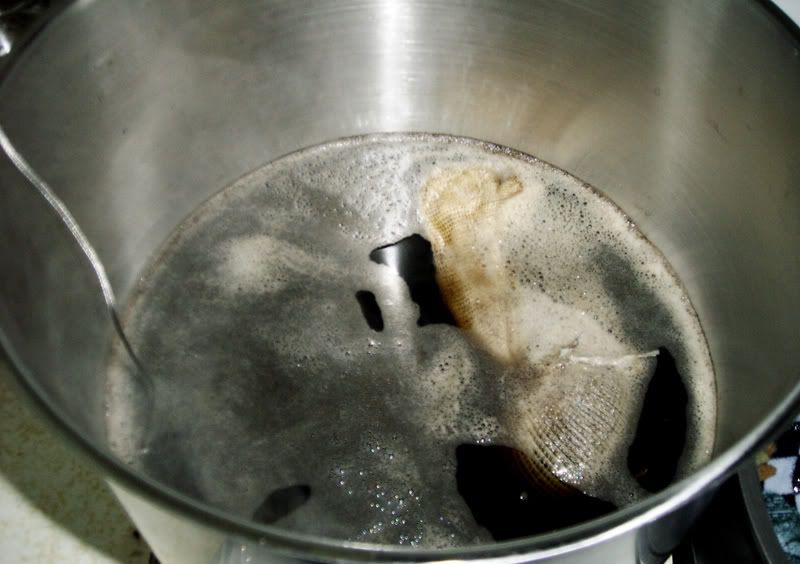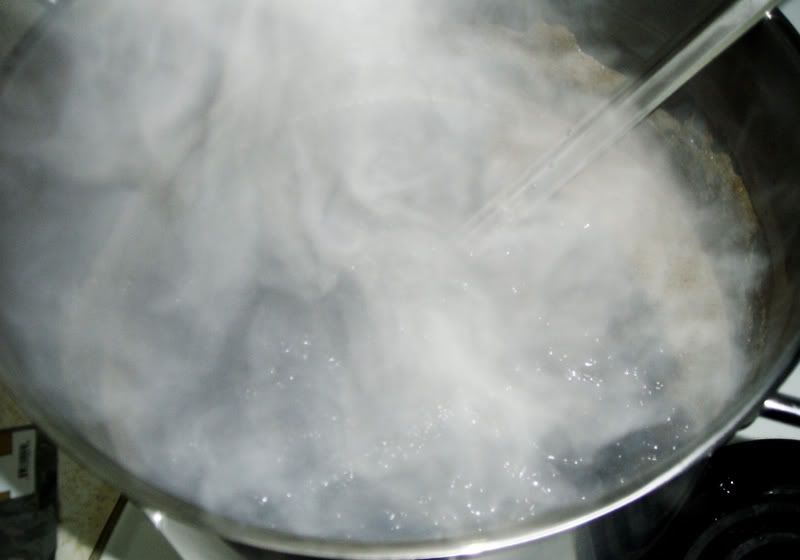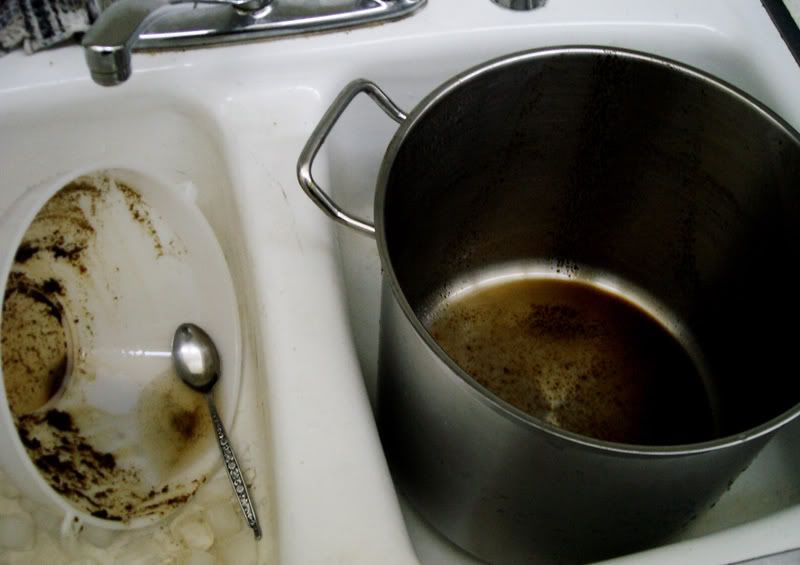I would have to say that the flavor has improved, just over the short amount of time since I last tasted. It still has that even balance of maltiness, bitterness, sweetness, hoppiness and alcohol. I think it's actually gotten a little maltier though so it's a little more bitter than it is sweet now, but I like that. Body is medium, which is mostly because of the low attenuation of the yeast. It's still kind of cloudy, but that's more of an aesthetic thing than a flavor thing.
Since the SG didn't change from the last reading, my FG (final gravity) is 1.016 and thus the ABV is 3.15%.
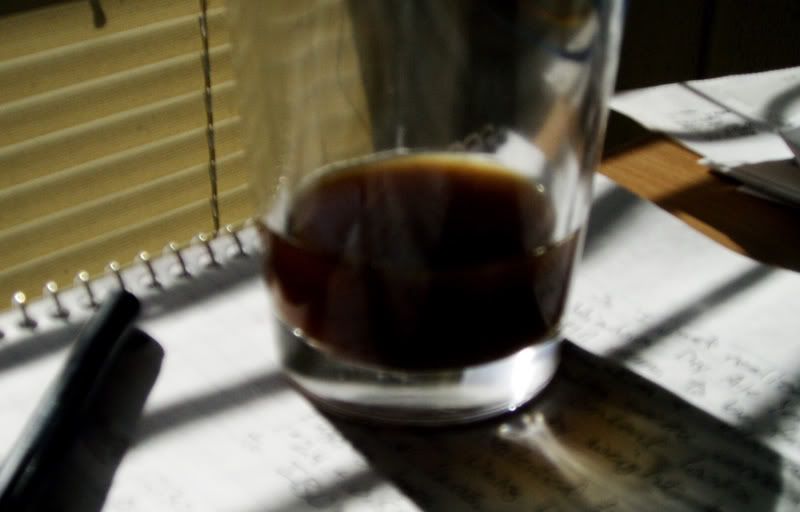
Here's the sample I pulled, you can kind of see how it's a darker beer, although a fair amount of that is due to the cloudiness.
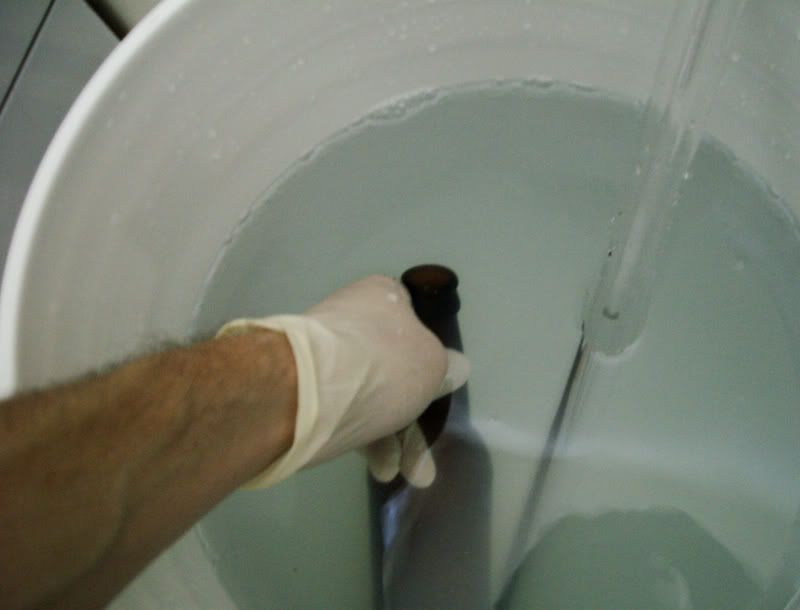
Here I am sanitizing the bottles. This didn't take too long as I could do two bottles at a time. (Other arm not seen b/c it is taking the picture.)
At this point I boiled a cup of corn sugar with 2 cups of water. This will be added to the bottling bucket so that the yeast have something to munch on in the bottles and produce carbonation. Sorry, no picture, just imagine boiling water and you've got it.

Now I'm siphoning the beer from the carboy to the bottling bucket to which I've already added the cooled corn sugar solution. Unfortunately, the tubing I have has an inner diameter which isn't quite small enough to create a good seal so my auto-siphon wouldn't even work. However, I wrapped the end of the auto-siphon with some tape to get a more snug fit, which allowed the auto-siphon to work, but it leaked some air into the beer, which is not entirely desirable.
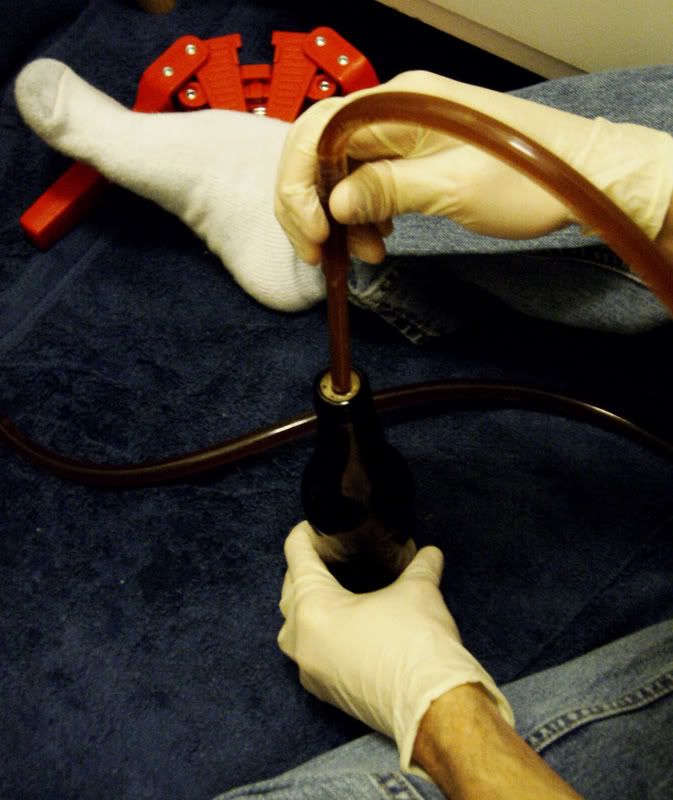
Here I'm filling the bottles, one by one. The bottle filler is spring-loaded so you press it on the bottom of the bottle and the beer starts flowing. If you fill it to the top it leaves the right amount of air space in the top of the bottom once you remove the filler.
I had the same problem with the tubing on the bottle filler as the auto-siphon, which again I fixed through the application of tape to the filler. I think before I bottle my next batch I will have to go out and get some small hose clamps; the tape works, but it isn't an ideal solution.
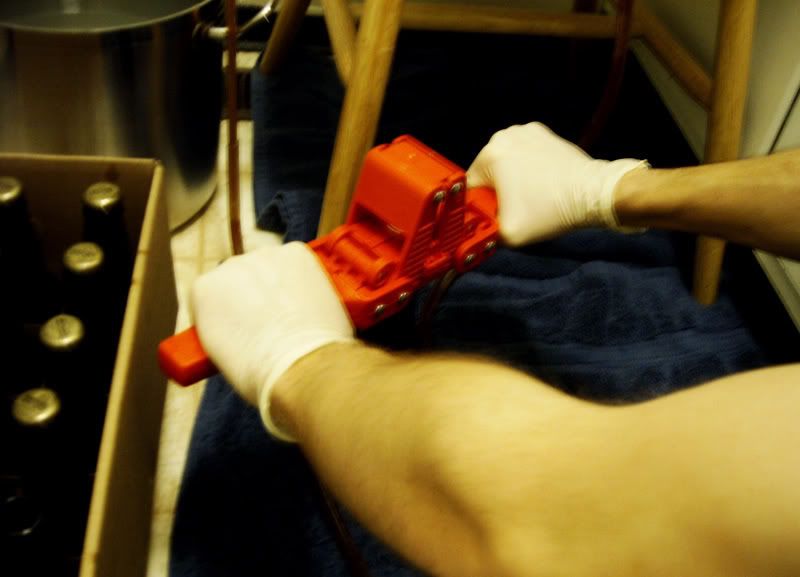
Here I'm capping the bottles. I decided to throw the bottle caps in the bottom of the 4 gallon pot of sanitizer, which meant that every time I fished one out, I would get sanitizer inside my glove. Next time I will put my caps in a somewhat shallower vessel.
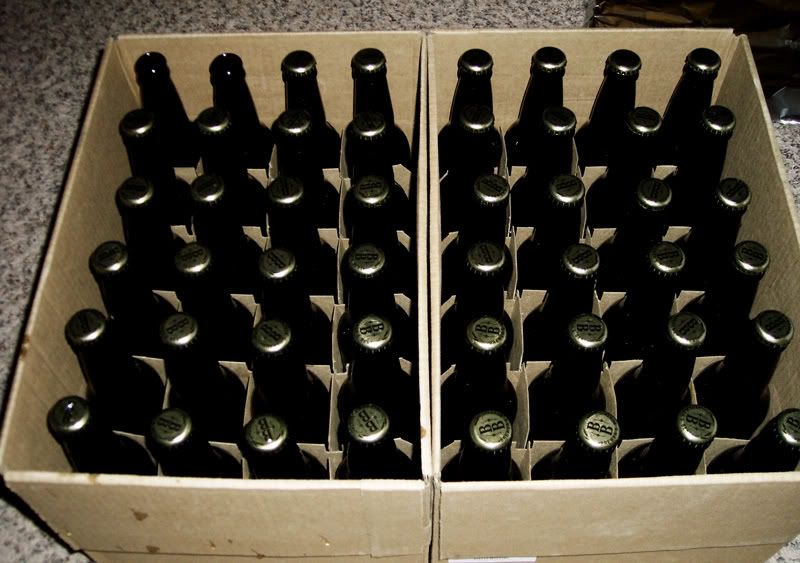
Yep, that's 46 bottles in all. It's quite satisfying to have them all capped up. Now to wait a week and hope I didn't just make a bunch of bottle bombs.
Like I said before, I'm a little concerned about the oxidization that occurred because of my tubing issues. I think I should be ok as beer is pretty resilient, but only time will tell.
Bottling was not very hard work, just rather tedious. It'll definitely go faster next time now that I know what to do (and what not to do). Cleaning up after is probably the hardest part, what with all the sediment and yeasty bits left in the carboy and the bottling bucket.
That's all for now. I'll post again in about a week when I crack one of the bottles open.




